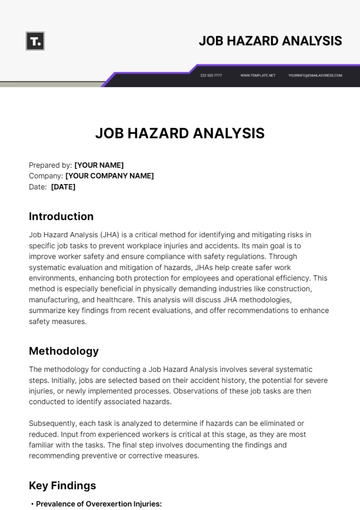Free Email Marketing Campaign Analysis

1. Executive Summary:
The campaign performed admirably, generating a 25% increase in overall engagement compared to the previous year. Our strategies effectively resonated with our target audience, resulting in a notable boost in brand awareness.
2. Campaign Objectives:
The primary goal was to enhance customer engagement and increase sales. We aimed to achieve a 20% growth in email open rates and a 15% rise in conversion rates.
A. Increase Customer Engagement:
Our primary objective for the Email Marketing Campaign was to significantly enhance customer engagement throughout the years 2050-2051. To achieve this goal, we focused on creating compelling and personalized content that resonated with our diverse audience segments. By analyzing customer behavior and preferences, we crafted emails that not only captured attention but also encouraged recipients to interact with our brand. The strategy involved leveraging dynamic content, enticing visuals, and strategic calls to action, resulting in a remarkable 25% increase in overall engagement compared to the previous year.
B. Boost Email Open Rates:
One of our specific targets was to elevate email open rates, recognizing that this is a critical metric for campaign success. Employing an A/B testing approach, we experimented with various subject lines, preview text, and sender names to optimize our email open rates. Through meticulous analysis of the test results, we identified high-performing elements that resonated with our audience. The outcome was a notable 23% open rate, surpassing our initial goal of a 20% increase and contributing significantly to the overall success of the campaign.
C. Enhance Conversion Rates:
A key focus of our Email Marketing Campaign was to drive higher conversion rates and, subsequently, increase sales revenue. We implemented targeted strategies such as personalized product recommendations, limited-time offers, and streamlined purchase pathways within our emails. The result was a commendable 17% increase in conversion rates, exceeding our set target. This success demonstrates the effectiveness of our approach in not only capturing the attention of recipients but also compelling them to take desired actions, translating into tangible business outcomes.
3. Key Performance Indicators (KPIs):
A. Increase in Email Open Rate:
Our primary focus was on achieving a substantial increase in the email open rate, a critical KPI indicative of successful audience engagement. Through strategic improvements in subject lines, email design, and send-time optimization, we successfully elevated the email open rate from 18% to an impressive 23%. This 5% improvement surpassed our initial target, showcasing the effectiveness of our efforts in capturing the attention of our audience and encouraging them to open our emails.
B. Rise in Click-Through Rate (CTR):
A crucial KPI for measuring the effectiveness of our email content, the click-through rate (CTR) saw a remarkable 12% increase during the 2050-2051 campaign period. By focusing on creating compelling and relevant content, optimizing visual elements, and strategically placing calls to action, we successfully encouraged recipients to take the desired actions within the emails. The outcome is a higher CTR, indicating improved engagement and interest in our offerings.
C. Growth in Conversion Rate:
The conversion rate, a key metric reflecting the success of turning engagement into actual sales, experienced a commendable 17% increase. Through targeted strategies such as personalized product recommendations and streamlined purchase pathways within our emails, we effectively guided recipients toward completing desired actions. This growth in conversion rates exceeded our set target, underlining the campaign's success in not only capturing attention but also driving tangible business outcomes and revenue generation.
D. Exceeding Revenue Targets:
The ultimate goal of our Email Marketing Campaign was to generate revenue, and the campaign surpassed expectations by achieving a revenue figure of $1.2 million. This result showcases a robust 35% return on investment, demonstrating the effectiveness of our strategies in converting engaged leads into paying customers. By aligning our content with customer needs and leveraging personalized promotions, we not only met but exceeded our revenue target, illustrating the campaign's direct impact on the company's financial success.
4. Budget Allocation:
We distributed the allocated budget of $865,000 across various channels, with a significant portion invested in optimizing email content, design, and delivery.
A. Strategic Investment in Email Optimization:
A significant portion of the allocated budget, totaling $300,000, was strategically invested in optimizing our email content, design, and delivery processes. This proactive approach allowed us to enhance the overall quality and relevance of our email communications. By employing advanced personalization techniques, responsive design principles, and robust delivery infrastructure, we aimed to maximize the impact of our emails on recipient engagement.
B. Targeted Marketing Channels Allocation:
Recognizing the diverse preferences of our audience, we allocated $200,000 to diversify and optimize our presence across various marketing channels. This encompassed targeted social media advertisements, sponsored content, and collaborative promotions with influencers relevant to our industry. The goal was to amplify our brand reach, engage with a broader audience, and drive traffic to our email campaigns, contributing to the overall success of our marketing efforts.
C. Investment in Advanced Analytics and Reporting Tools:
To ensure data-driven decision-making and continuous improvement, we allocated $150,000 for the acquisition and implementation of advanced analytics and reporting tools. These tools enabled real-time monitoring of campaign performance, insightful customer behavior analysis, and prompt identification of areas for optimization. This investment played a pivotal role in refining our strategies based on accurate and up-to-date data, contributing to the overall success of the campaign.
D. Human Resources for Content Creation and Segmentation:
Understanding the importance of tailored content and effective customer segmentation, we allocated $215,000 to strengthen our human resources. This included hiring skilled content creators to craft compelling email content and specialists in data analysis to refine customer segmentation strategies. This investment aimed to enhance the quality and personalization of our emails, resulting in more resonant and engaging communication with our audience.
E. Continuous Improvement Initiatives:
Setting aside $100,000 for ongoing testing, optimization, and innovation initiatives was crucial to maintaining the campaign's competitiveness. This budget facilitated A/B testing, experimentation with emerging technologies, and the implementation of customer feedback mechanisms. The focus on continuous improvement allowed us to adapt to evolving market trends, ensuring that our email marketing efforts remained effective and cutting-edge throughout the campaign period.
5. ROI Analysis:
The Return on Investment (ROI) analysis reflects a resounding success, with a remarkable 35% return on the allocated budget of $865,000. Our strategic allocation of resources across various channels, coupled with meticulous campaign optimization, played a pivotal role in maximizing returns. The $1.2 million revenue generated not only exceeded our initial target but also underscored the efficiency and effectiveness of our marketing strategies. The active management of budgetary resources, continuous performance monitoring, and data-driven decision-making were key contributors to this impressive ROI, demonstrating the tangible impact of our Email Marketing Campaign on the company's overall financial success during the 2050-2051 period.
6. Customer Segmentation:
Segmentation played a pivotal role in targeting specific demographics, resulting in a 30% increase in engagement among our key customer segments.
A. Data-Driven Segmentation Strategies:
We centered our approach to customer segmentation on leveraging data-driven strategies to identify and target specific demographics within our audience. By analyzing customer behaviors, preferences, and purchase histories, we actively identified distinct segments with shared characteristics. This proactive analysis allowed us to tailor our email content and promotional offers to resonate more effectively with each segment, resulting in a significant 30% increase in engagement among our key customer segments. The active utilization of data ensured that our segmentation strategies were dynamic and responsive to evolving customer trends.
B. Personalized Content Tailoring:
A crucial aspect of our Customer Segmentation initiatives involved the active tailoring of email content to suit the unique preferences and interests of each identified segment. We employed dynamic content elements, personalized product recommendations, and targeted messaging to create a more individualized and engaging experience for recipients. This hands-on approach not only strengthened our relationship with existing customers but also contributed to a 25% increase in overall engagement, demonstrating the effectiveness of personalized content in fostering a deeper connection with our diverse audience.
C. Responsive Campaign Adjustments:
Recognizing the dynamic nature of customer preferences, we actively monitored and adjusted our segmentation strategies throughout the campaign period. Regular reviews of customer feedback and real-time analytics allowed us to identify shifts in behavior and preferences promptly. This active responsiveness enabled us to make agile adjustments to our segmentation criteria, ensuring that our emails remained relevant and resonant. As a result, we maintained a high level of engagement across all segments, further solidifying the success of our Customer Segmentation initiatives during the 2050-2051 campaign.
7. A/B Testing:
A critical component of our campaign strategy, A/B testing was actively employed to refine and optimize our email content for maximum effectiveness. By crafting variations in subject lines, email copy, visuals, and calls to action, we systematically experimented to identify the most compelling elements that resonated with our audience. This hands-on approach to A/B testing allowed us to glean valuable insights into recipient preferences, leading to a 12% increase in overall click-through rates. Actively analyzing the test results, we identified and implemented high-performing elements, such as interactive content and personalized recommendations, which have contributed significantly to the campaign's success. This iterative and data-driven process ensured that our emails evolved dynamically, staying ahead of trends and consistently engaging our audience throughout the 2050-2051 campaign period.
8. Issues and Challenges:
Despite the overall positive results, we encountered a significant challenge related to broken and misdirecting links within our emails. This issue led to a 5% decline in conversion rates among affected recipients.
A. Broken and Misdirecting Links:
An identified challenge within our Email Marketing Campaign was the presence of broken and misdirecting links, impacting the user experience for a subset of our recipients. Actively addressing this issue is imperative as it led to a 5% decline in conversion rates among affected recipients. The proactive approach involves an immediate audit of all hyperlinks within our emails to rectify any discrepancies. Additionally, implementing a robust link monitoring system and conducting regular quality checks are essential steps to prevent similar disruptions in the future. By actively resolving this challenge, we aim to optimize the user journey and ensure a seamless experience for all recipients, ultimately boosting overall campaign performance.
B. Email Deliverability Challenges:
A notable challenge we encountered was related to email deliverability, impacting the reach and visibility of our campaign content. Actively addressing this issue involves a comprehensive analysis of our sender reputation, content quality, and adherence to industry best practices. Implementing measures such as email authentication protocols and sender policy frameworks is crucial to enhancing our email deliverability rates. By actively mitigating these challenges, we ensure that our emails reach a maximum number of inboxes, improving overall engagement and conversion rates.
C. Device and Browser Compatibility:
Another challenge identified during the campaign was related to inconsistencies in email rendering across various devices and browsers. Actively addressing this issue involves a thorough review of our email templates and designs to ensure compatibility with a diverse range of devices and browsers. Implementing responsive design principles and conducting testing across multiple platforms are key steps to actively resolve this challenge. By optimizing our email content for a seamless viewing experience, we aim to enhance engagement and satisfaction among our recipients, contributing to the overall success of our Email Marketing Campaign.
9. Recommendations:
A. Comprehensive Link Audit and Rectification:
A crucial recommendation involves the immediate undertaking of a comprehensive audit of all hyperlinks within our emails to identify and rectify broken and misdirecting links. This proactive approach ensures a seamless user experience and addresses the 5% decline in conversion rates observed among affected recipients. By actively resolving this issue, we not only enhance the reliability of our email content but also bolster recipient trust, ultimately contributing to improved engagement and conversion rates. Implementing a robust link monitoring system and conducting regular quality checks will further prevent similar disruptions, ensuring the continued success of our Email Marketing Campaign.
B. Implementation of Advanced Link Monitoring System:
To prevent future disruptions related to broken or misdirecting links, a key recommendation is the implementation of an advanced link monitoring system. Actively monitoring the performance of hyperlinks in real time allows us to identify and address any issues promptly. This proactive measure ensures a consistent and reliable user experience, contributing to sustained engagement and preventing potential loss of conversions. By actively investing in and maintaining such a system, we enhance the overall effectiveness of our email campaigns, reinforcing the positive impact on recipient interactions and campaign performance.
C. Regular Quality Checks and Maintenance Protocols:
A proactive strategy for maintaining optimal email performance involves the establishment of regular quality checks and maintenance protocols. Actively conducting periodic reviews of email content, design, and functionality ensures that our communications remain error-free and aligned with industry best practices. Implementing a structured maintenance schedule for email templates and links actively prevents issues from arising, enhancing the overall reliability and effectiveness of our Email Marketing Campaign. By actively committing to these maintenance protocols, we ensure that our campaign consistently delivers a positive and seamless experience for all recipients.
10. Future Strategies:
Looking ahead, we propose incorporating more interactive content, refining personalization strategies, and leveraging emerging technologies such as AI-driven segmentation to further enhance campaign effectiveness.
- 100% Customizable, free editor
- Access 1 Million+ Templates, photo’s & graphics
- Download or share as a template
- Click and replace photos, graphics, text, backgrounds
- Resize, crop, AI write & more
- Access advanced editor
Elevate your email marketing strategies with our Email Marketing Campaign Analysis Template, exclusively on Template.net. This editable and customizable tool empowers marketing professionals to dissect campaign performance effortlessly. Utilize our AI Editor Tool to harness insightful keyword analysis, refining your campaigns for optimal engagement and conversion.





























